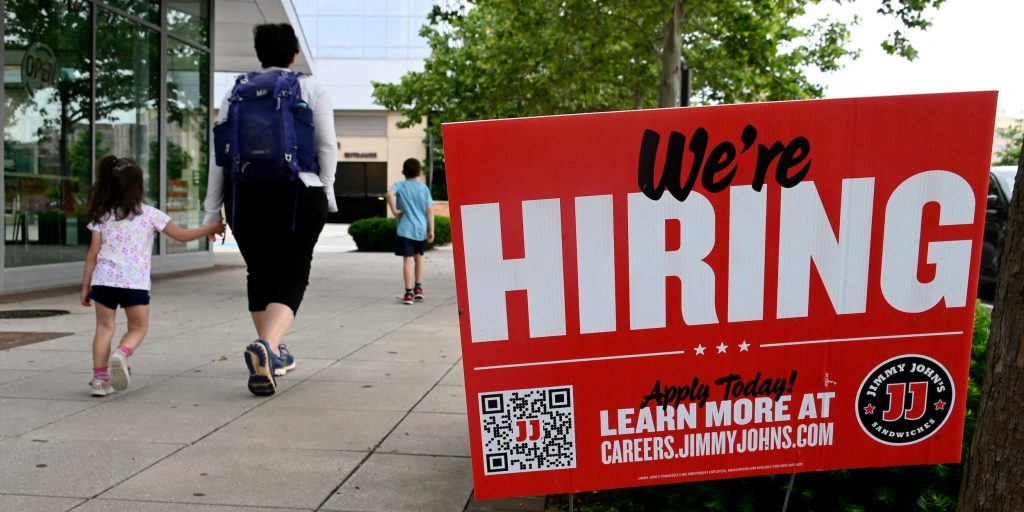- Job openings plunged to 10.7 million in June, landing below the estimate for 11 million openings.
- The drop is the largest since the pandemic started and signals the labor shortage is reversing.
- Quits also slid for a third straight month, adding to signs that the labor market is normalizing.
The labor market is badly out of wack. New data suggests it might not be that way much longer.
Job openings tumbled to 10.7 million from 11.3 million in June, according to Job Openings and Labor Turnover Survey, or JOLTS, data published Tuesday morning. That landed below the median estimate of 11 million openings from economists surveyed by Bloomberg. It also marked the lowest count since September and the largest one-month drop since the start of the pandemic.
Retailers counted for more than half of the overall drop in openings, with the sector shedding 343,000 openings in June. Wholesale trade firms followed with a drop of 82,000 openings. The public education sector cut 62,000 openings.
Job listings ticked higher within the finance and insurance sector, with such firms adding 31,000 openings. Educational services added 22,000 openings.
The Tuesday reading, while preliminary, hints the labor shortage is fading. Job openings skyrocketed through 2021 as vaccine rollouts and economic reopening prompted a scramble among employers to ramp up operations. But where labor demand quickly rebounded, the count of available workers rose at a much slower pace. That imbalance persisted through 2022 and came to define the pandemic-era workforce. The latest JOLTS print, however, signals the cavernous gap between worker demand and supply is starting to close.
The number of unemployed Americans per job opening climbed to 0.6 in June from 0.5, adding to signs that the labor market is normalizing. Though there are still nearly two openings for every available worker, the uptick is the first since the pandemic started. It also snaps a three-month streak of record-low workers-per-openings ratios.
To be sure, there's still a way to go before worker supply is back to pre-crisis levels. Labor force participation — the share of Americans either working or actively seeking work — dipped in June to 62.2%, according to government data published last month. That's down from the pre-pandemic February 2020 reading of 63.4%.
Reasons abound for why workers aren't rushing back to the labor market. Public health concerns continue to fuel caution, especially with monkeypox cases soaring in several cities. Child care costs have sidelined many working parents, and the end of the school year only intensified those pressures in June. Record-high gas prices could've kept some unemployed Americans from seeking work as well.
Quits data also hints at the labor market's dislocation improving. Total quits slid to 4.2 million from 4.3 million in June, according to the report, reflecting the lowest level since October. Quits have now fallen for three months straight, reversing course from the numerous record highs notched throughout last year.
Americans tend to quit when they believe they can easily find a higher-paying job. The June decline suggests the fervor for workers that boosted wages throughout the pandemic is fading away, and that the economy is entering more familiar territory.
